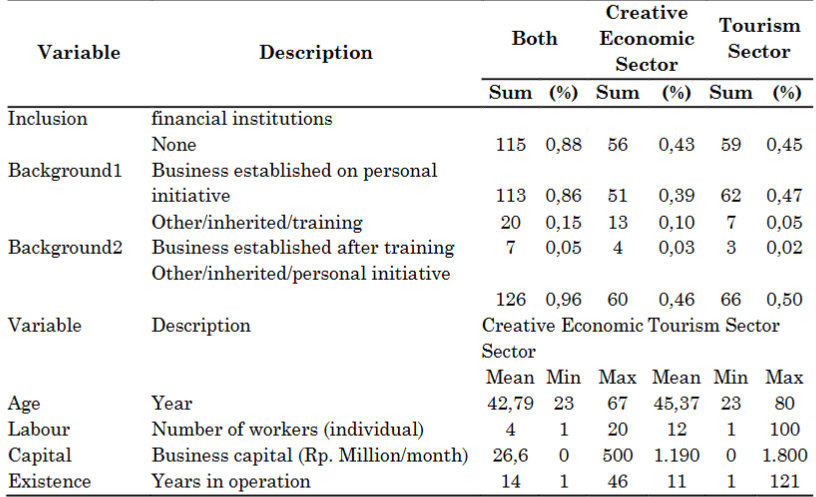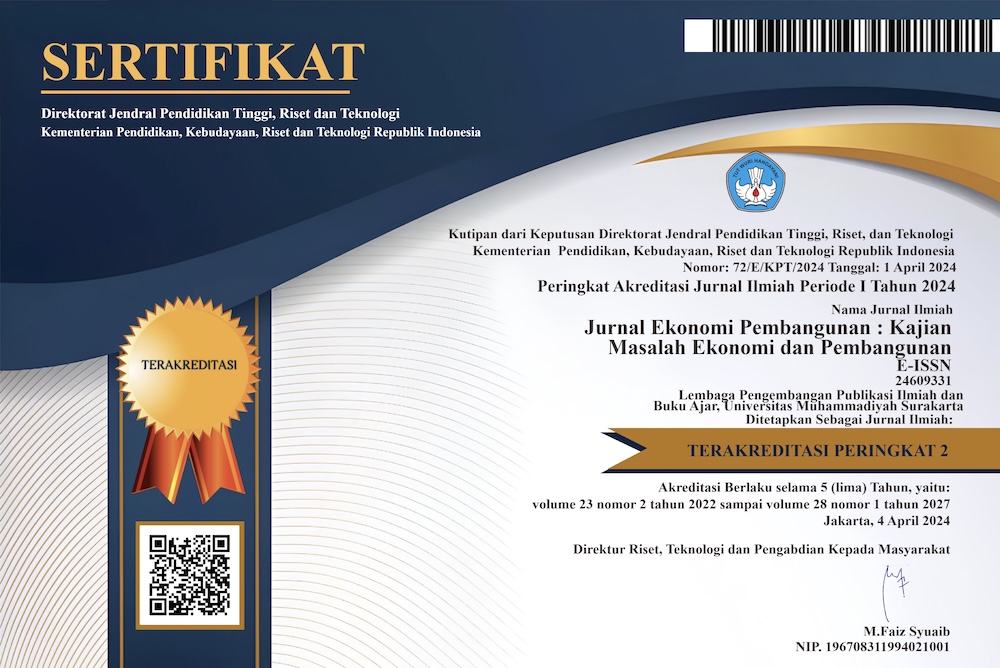Investigating the Key Drivers of Career Selection in the Creative Economy Sector
DOI:
https://doi.org/10.23917/jep.v25i2.24066Keywords:
Characteristic of Business, Entrepreneurship, Creative Economy, Probit RegressionAbstract
This study focuses on identifying the key determinants that shape individuals' decisions to pursue entrepreneurship within the creative economy sector, specifically in a National Strategic Tourism Area. The research zeroes in on Magelang Regency in 2024, a region with substantial potential for creative economy growth due to its strategic tourism positioning. Employing a probit regression model grounded in utility theory and neoclassical labor choice theory, the study examines how various factors influence the likelihood of participating in the creative economy. The results indicate that higher capital are negatively correlated with participation, while increased availability of local resources enhances the probability of engagement. legality of business entity negatively impacts the probability of choosing to enter the sector. Conversely, heightened perceived competitiveness and lower technological proficiency significantly diminish the likelihood of entry. The research significantly contributes to understanding the determinants of individual entrepreneurial decisions in the creative economy sector within National Strategic Tourism Areas, particularly highlighting the critical roles of partnerships and local resource utilization. These findings underscore the need for targeted policy interventions, such as promoting collaborative business models and improving access to financial and technological resources, to foster equitable growth and enhance participation in the creative economy sector. To foster greater participation in the creative economy, policy interventions should prioritize reducing capital barriers, enhancing resource accessibility, strengthening educational initiatives, and addressing deficiencies in competitiveness and technological skills.
Downloads
















